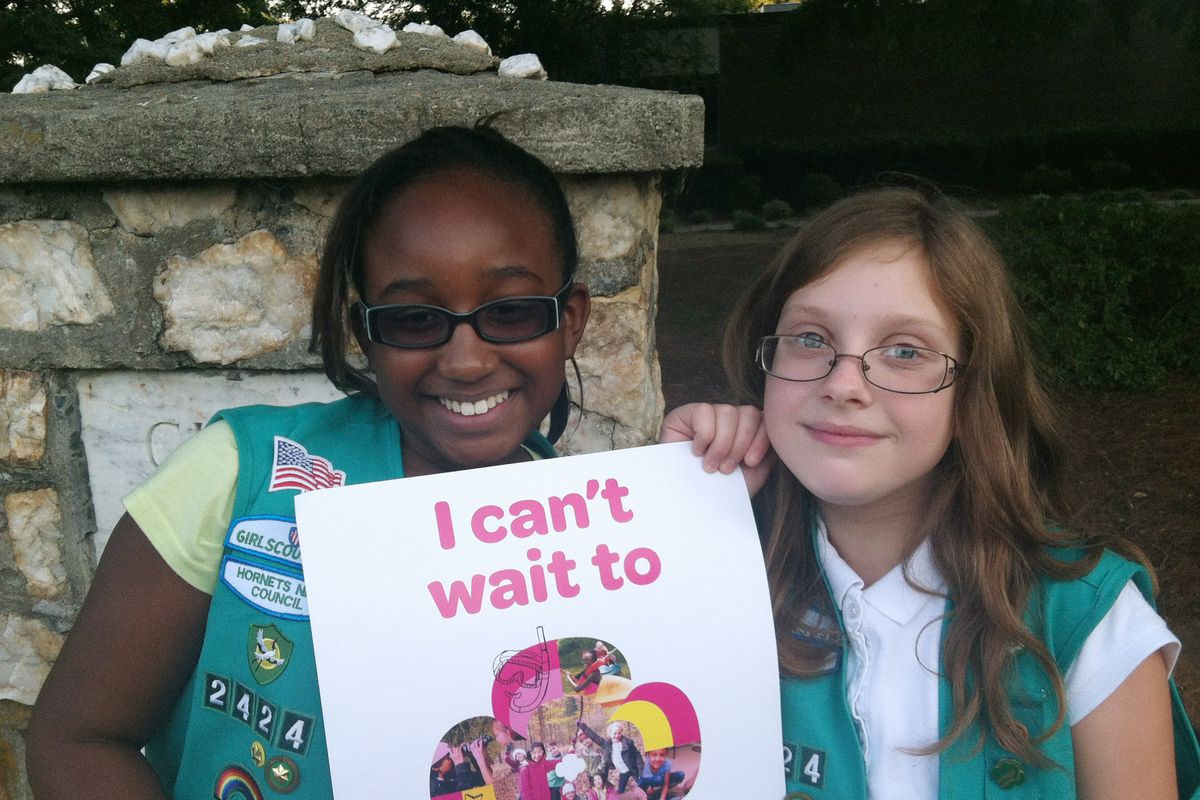Girl Scouts launch drive to halt membership drop

NEW YORK – With an assist from Michelle Obama, the Girl Scouts of the USA is launching an unorthodox recruitment campaign this week aimed at reversing a long-running decline in participation by girls and adult volunteers.
Instead of placing ads on TV, in newspapers and on billboards, the decentralized campaign will unfold in neighborhood initiatives and on social media as local Girl Scout councils directly target elementary-school girls – even kindergartners – with promises of adventuresome fun.
The first lady is pitching in with a video in which she lauds the contributions of the Girl Scouts and urges adults to find the time to help out.
“In order to bring the fun to more girls, Girl Scouts need you to volunteer,” she says. “You can show girls that anything is possible. You can inspire them to dream bigger and go further than they ever imagined.”
Obama, like other first ladies since 1917, serves as the Girl Scouts’ honorary national president.
The upbeat campaign launch follows a trying stretch for the Girl Scouts, who celebrated their centennial in 2012 but have confronted multiple difficulties this year. These include a deficit-strapped pension plan, rifts over the direction of Girl Scout programming and revenue shortfalls that prompted the national headquarters to trim about one-fourth of its staff through buyouts and layoffs.
Overshadowing all the problems is the steady decline in membership – a trend also buffeting other national youth organizations as children turn to other after-school and weekend diversions. The Girl Scouts today have about 2.2 million youth members, down from nearly 2.9 million in 2003. Over the same span, the ranks of adult volunteers have dwindled from 986,000 to 890,000.
Anna Maria Chavez, the Girl Scouts’ CEO, acknowledged that fiscal challenges linger, but she depicted the recruitment campaign as a chance for the national office and the 112 local councils to re-energize in pursuit of a common goal.
“This is the time to double down for the Girl Scouts and help us grow,” she said.
The campaign’s catchphrase is “I Can’t Wait To …,” and its bright-colored components offer multiple phrases to complete the sentence, such as “Create my own masterpiece” and “Make everybody say, ‘Whoa!’ ”
“This is the first time we’re speaking in that fun, fresh language – speaking in a girl’s voice,” said Sarah Gormley, a GSUSA marketing executive. Her hope is that buzz about the Girl Scouts spreads girl-to-girl and parent-to-parent by word of mouth.
The campaign was designed by national and local Girl Scout leaders based on research conducted by InterBrand, a consultancy firm.
“We learned from the research that the heart of what makes girls want to join, and adults to volunteer, is the opportunity for new experiences,” Gormley said.
One of the local leaders who helped design the campaign was Katherine Lambert, executive vice president of the Charlotte, N.C.-based Hornets’ Nest Council.
“There were some tremendous light-bulb moments,” Lambert said. “It wasn’t that we didn’t offer what girls needed. It was that we weren’t talking about the fun.”
Bucking the national trend, Lambert’s council has been able to boost its youth membership by 33 percent over the past 10 years to 16,500 girls. But she said the council shares a problem with many of its counterparts nationwide: waiting lists of girls who can’t be signed up because of too few adult volunteers.
“Our volunteers need help, They need reinforcements,” said Chavez, noting the demographic changes taking place among America’s parents – fewer stay-at-home moms, more single parents and working mothers with challenging daily schedules.
“We need to recruit and train them in a way that that works for them,” Chavez said.